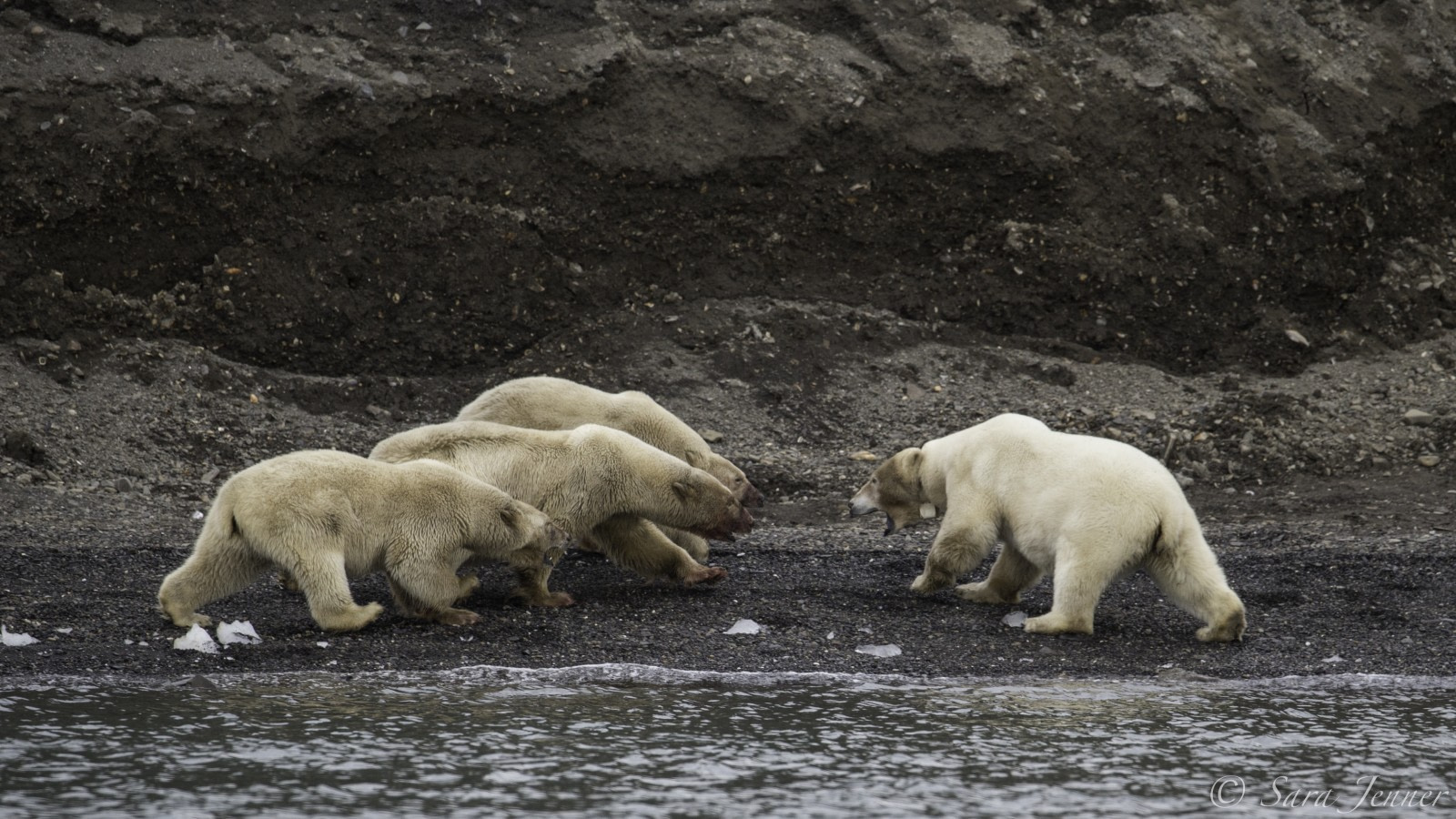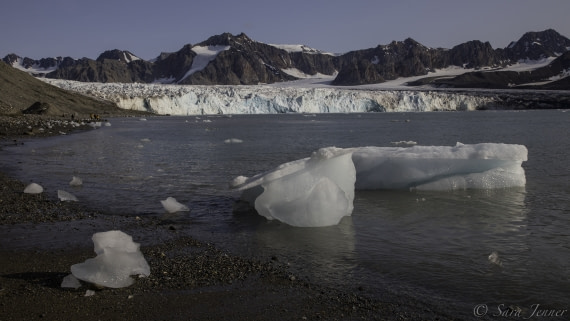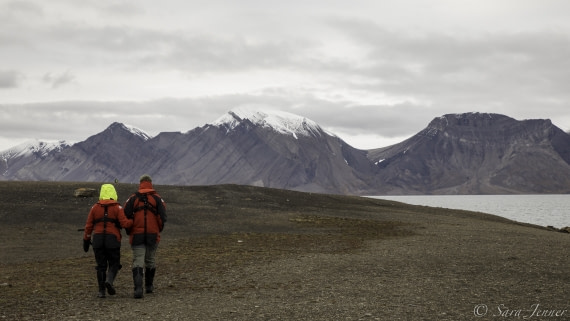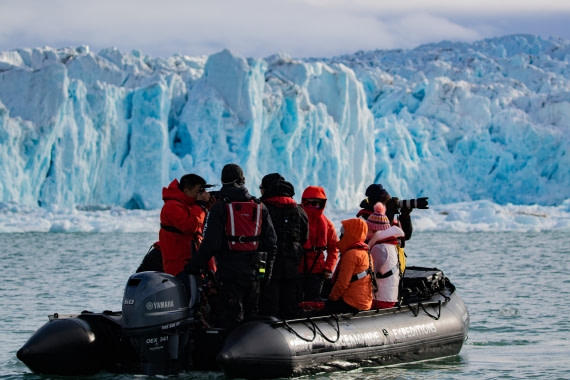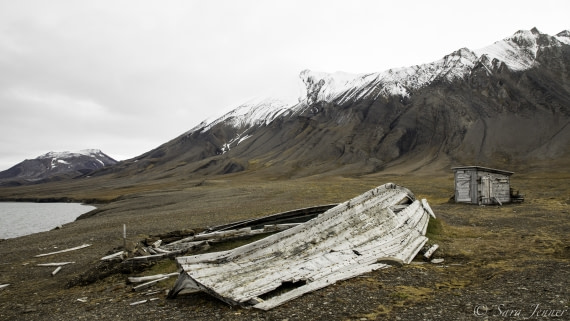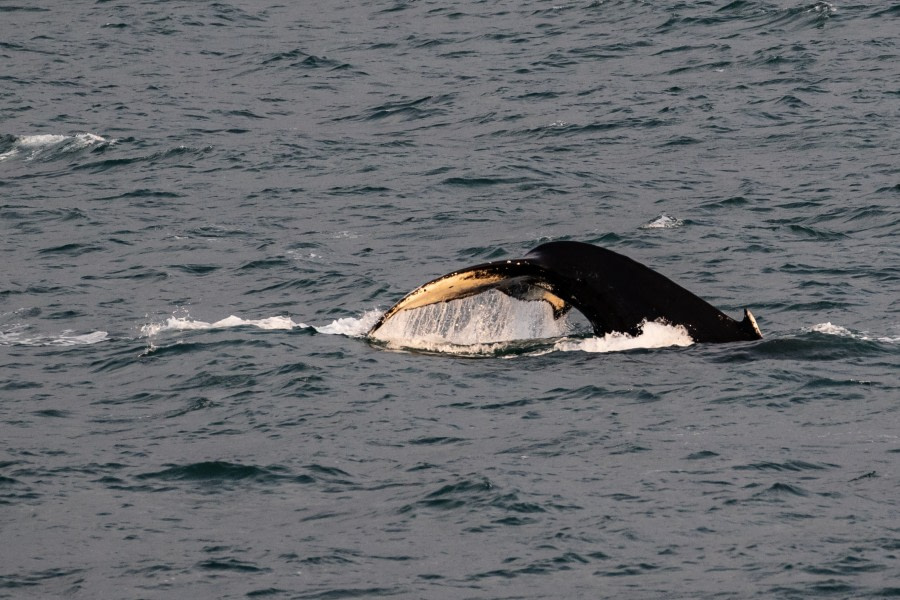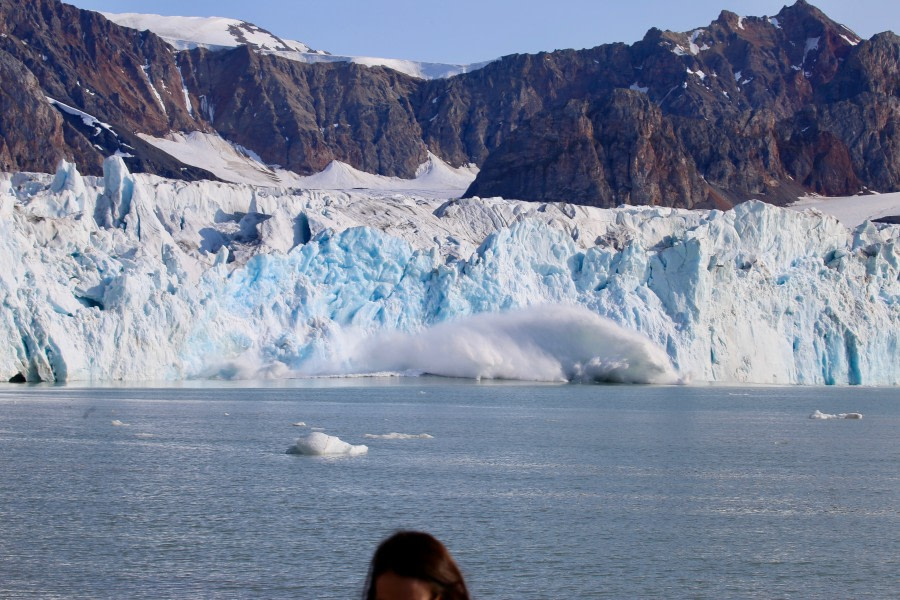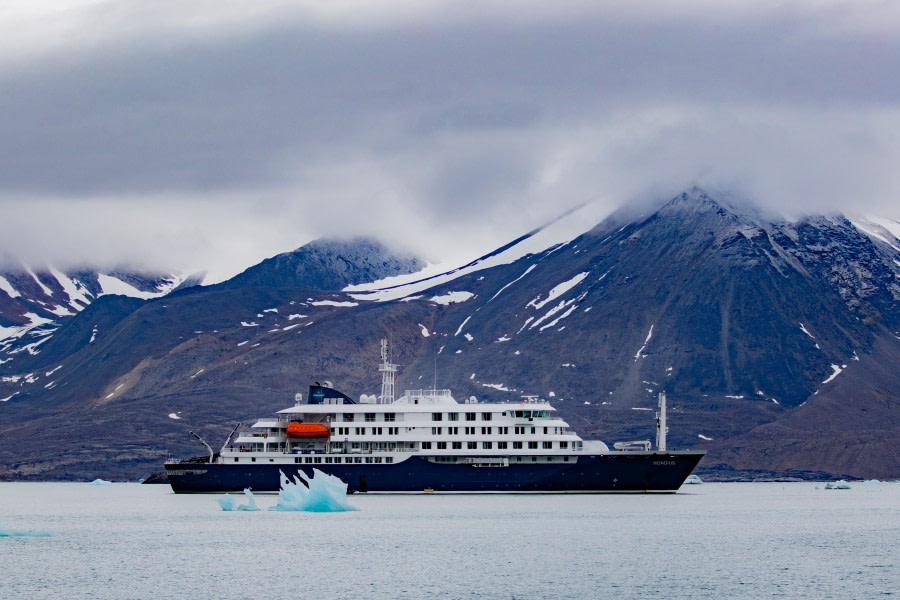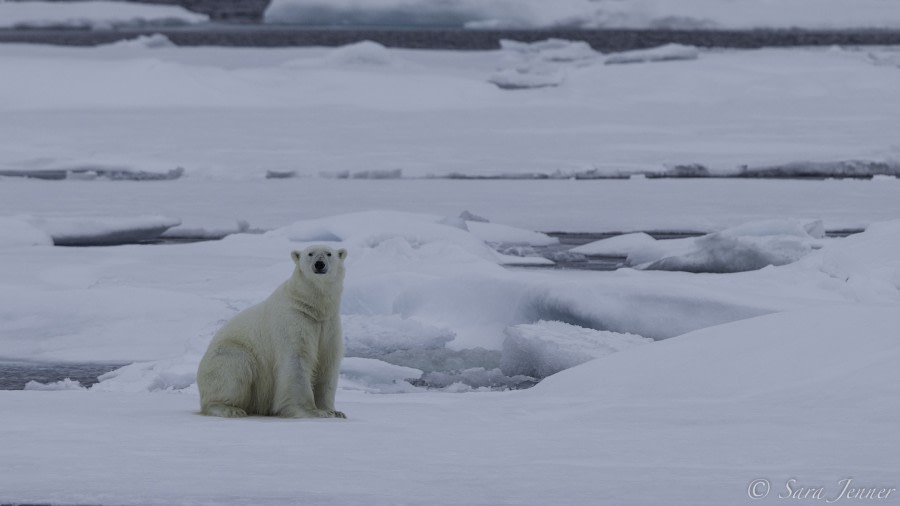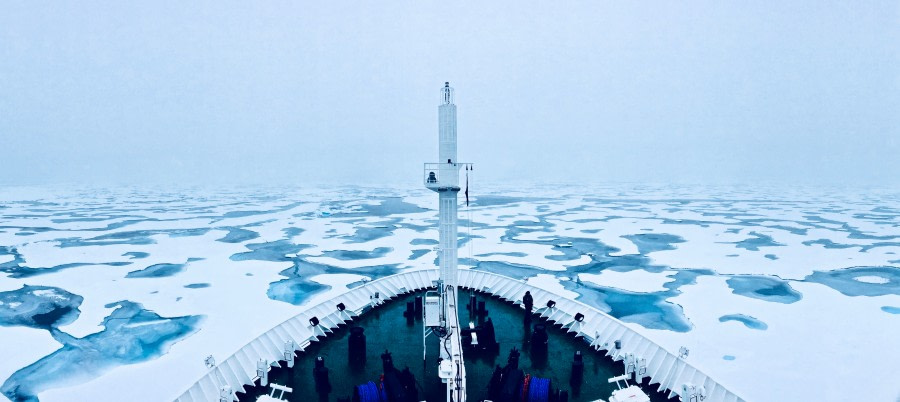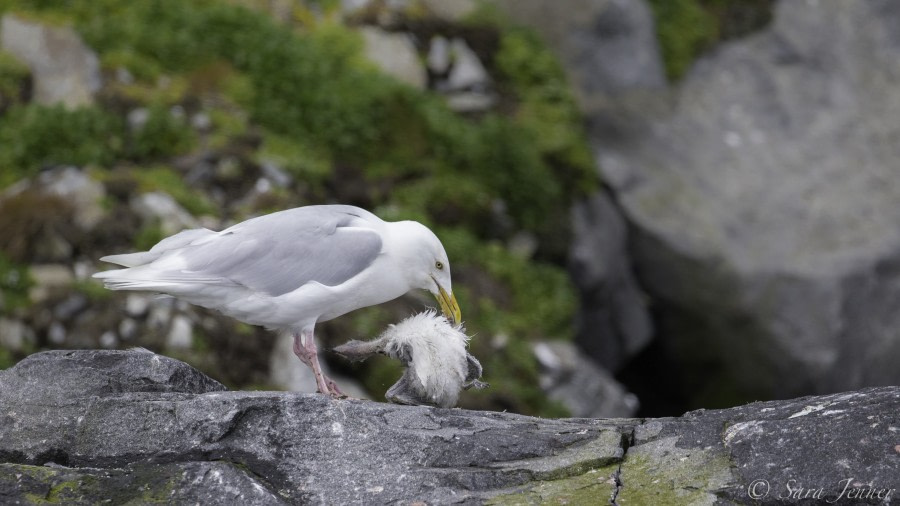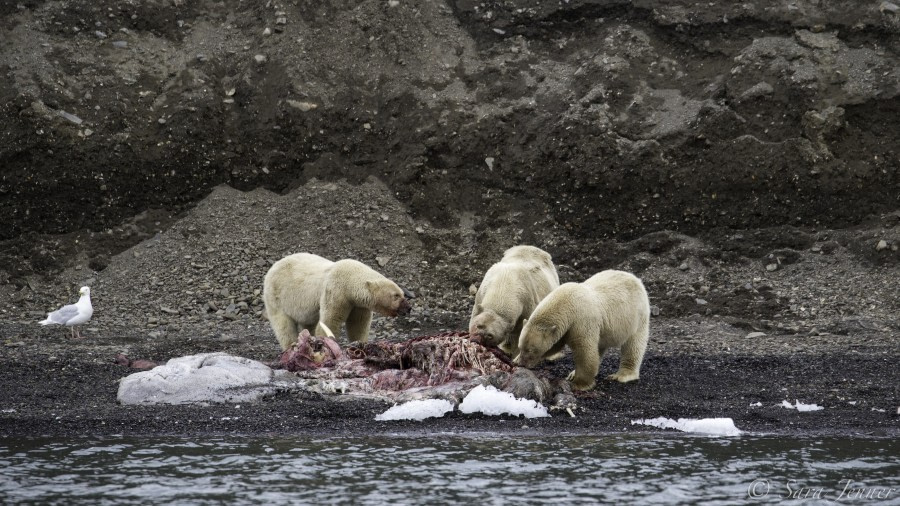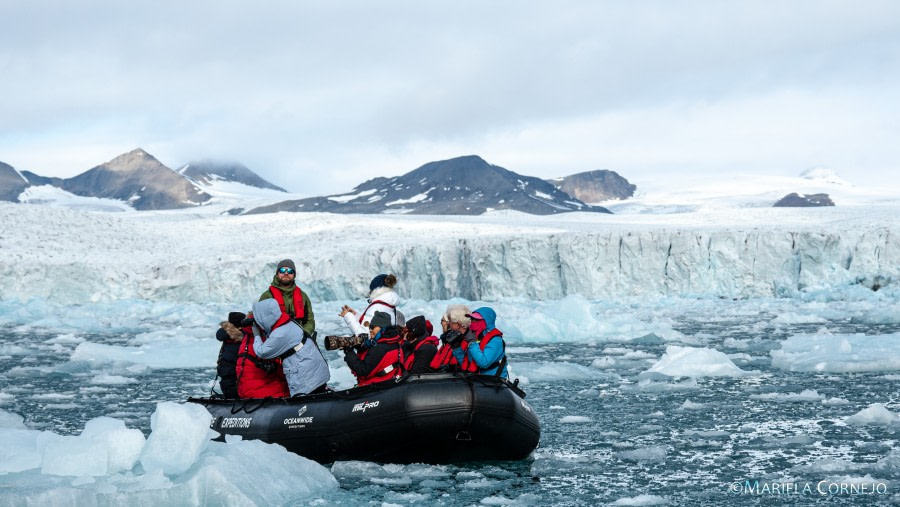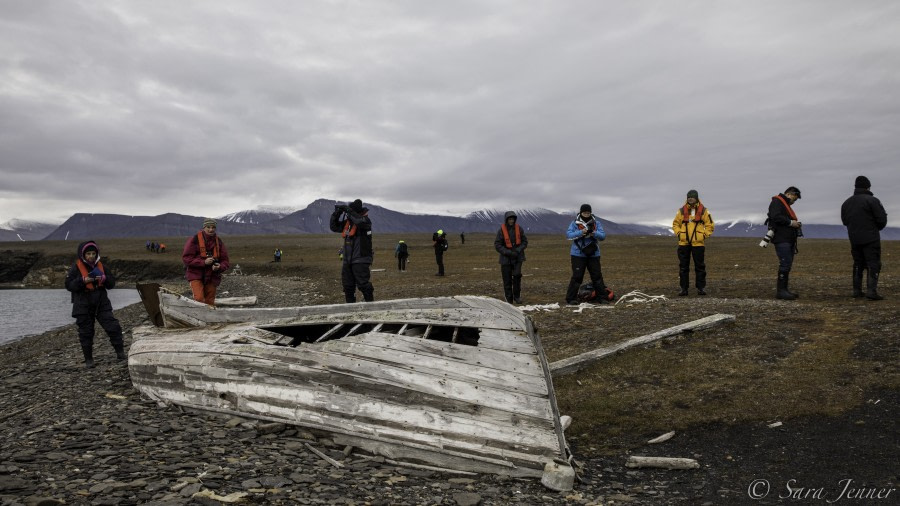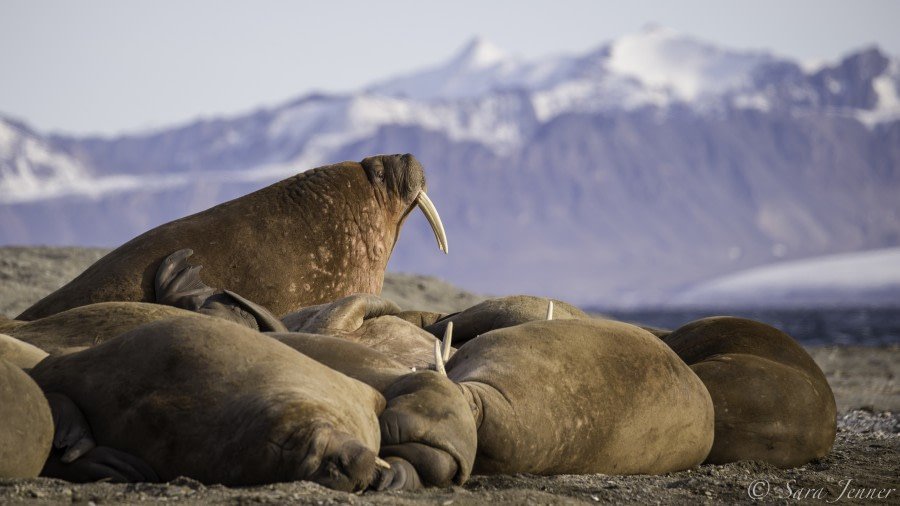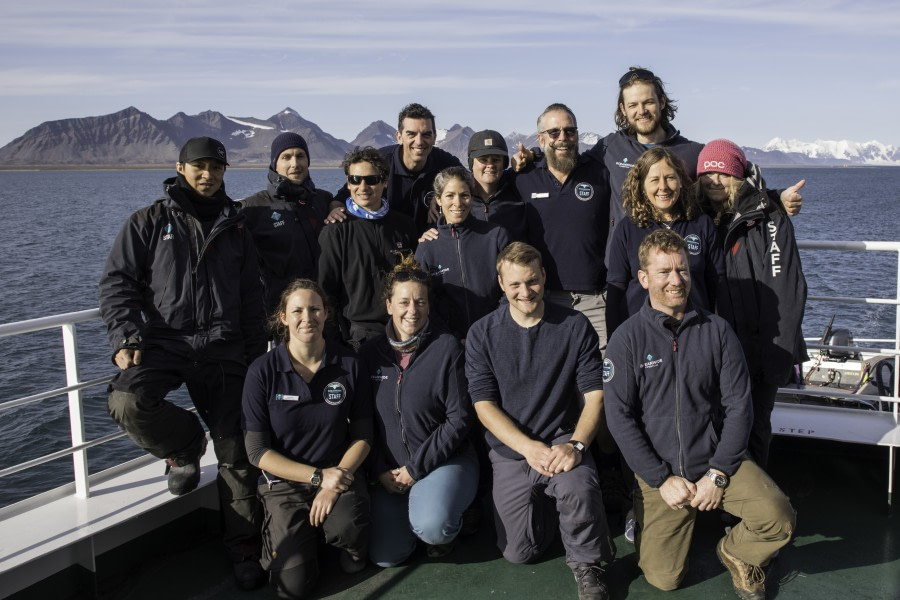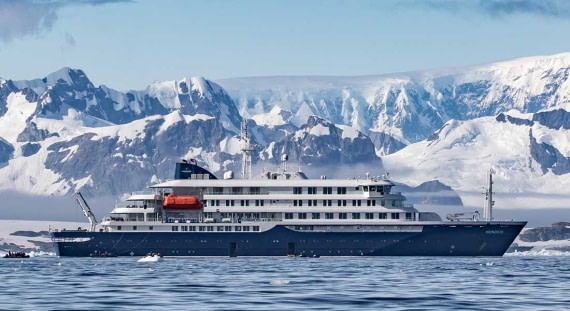| Date: |
18.08.2019 |
| Position: |
77⁰04’ N 16⁰00’ E |
| Wind: |
W F1 |
| Weather: |
Partly Cloudy |
| Air Temperature: |
+4 |
We woke up this morning as we entered Hornsund Fjord, the weather was calm and some clouds hung from the high cliffs of the entrance of Burgerbukta, our designated site for our morning activity.
Burgerbukta is a narrow fjord of about 2.5 kilometers wide on the north side of Hornsund. This fjord then divides into two bays, in the middle a jagged spine mountain resembles the back of a hedgehog.
Hondius anchored in the middle of the fjord, and as we had breakfast, zodiacs were lowered into the water, and the expedition staff team got ready for the zodiac cruise into the west branch of this amazing place. At 0900 we started boarding zodiacs and started our way into the western branch of Burgerbukta, Vestre. As we penetrated into the Fjord, we were able to enjoy the maze of geology that the steep cliffs of Sofiekammen, the mountain ridge on the west side of Vestre.
These cliffs show an incredible array of uplifted sedimentary rocks, from dark Triassic sandstone to yellowish Carbonate and Permian carbonates. All in this stunning cliff, that bares the marks of river runs tainted with reddish iron oxide. Some Puffins, Guillemots and Kittiwakes flew around the boats, dove into the water, and gave us a great welcome into the bay. Paierlbreen, the 2 kilometer long glacier in the back of the bay, has been really active in the last couple of weeks.
This has left the fjord filled with brash ice, bergy bits and icebergs of all different sizes and as many different shades of blue you could ever imagine. As we snaked through the bits of ice, the few clouds in the sky dissipated and the sun started shinning onto the glacier and ice in the bay, which glittered and sparkled this maze of never-ending ice. At about a kilometer away from the front of the glacier we were finally stopped by the amount of ice in the water. Here we took some time, just sitting in the zodiacs, contemplating the views that Svalbard gifted us with on this spectacular location. Time flew, and it was already lunch time when we finally made it back onboard.
As we enjoyed our lunch, Hondius repositioned to the south side of Hornsund into Samarinvagen. This is a fjord that holds a stunning glacier on its southern end, and as it has been retreating, it has exposed a small mount on its west side, that we eventually used as a view point on the afternoon excursion.
At 1500 we got back on the zodiacs for a split activity. Half of us went for a landing and the other half went for a zodiac cruise into the front of the glacier for about an hour and a half, to then exchange positions, so we all had the chance to experience the views of this 3 kilometer wide glacier. A surprise awaited us amongst the bits of ice… our Expedition leader had arranged apple and cinnamon drinks with optional Drambuie on the zodiacs! What a way to top the zodiac cruise. Our experience on shore was just as exciting. The expedition team had arranged a perimeter landing for us, giving us the chance to climb up onto the retreating glacier and getting to a vantage point to have an over view of the bay.
This short hike started on the moraine of an old glacier that now is just a thin layer of ice covered with rock that the glacier once scraped from the nearby mountains. These conditions made this glacier safe enough to walk on it, where Jochem waited for us and explained the incredible features we were seeing. The sun was shining bright in the sky as we approached Mariela on the top of the hill beside the glacier. The view was certainly incredible from up there.
We came back down to the landing site and took a ride on the zodiacs one more time back to Hondius. Here we went through another session of recap and briefing, were Bjarni told us about some of the women polar explorers, and Sara was able to finish her recap about Arctic fox, that was interrupted by whales the previous afternoon. Adam told us about the plans of the next day, and DJ, the Hotel manager, gave us the surprise of a special dinner… BBQ on the outer deck! The sun was still shinning, while we enjoyed our dinner, and at the end we all danced to some fun tunes as Hondius slowly sailed out of the bay into a never-ending sun set. What a day!!!
